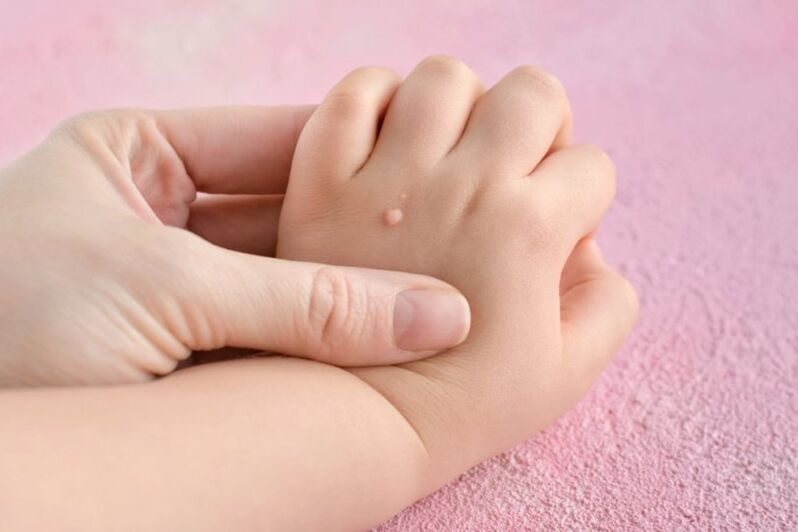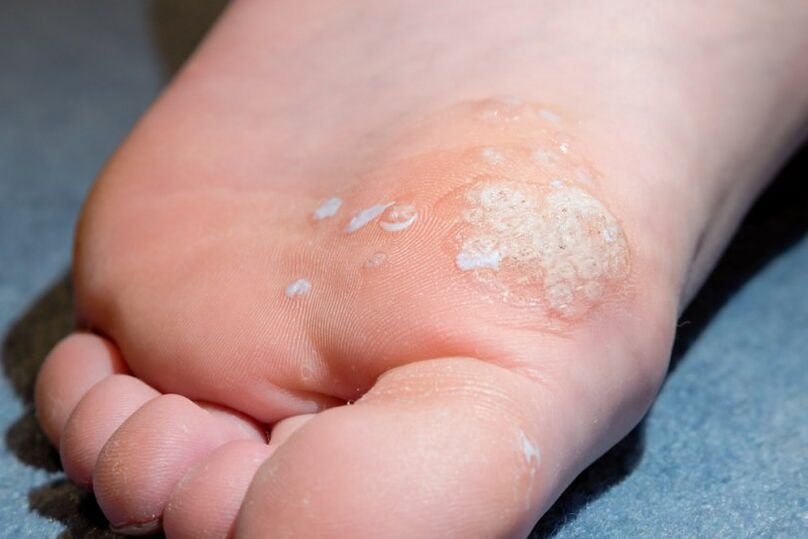Warts are benign formations on the skin that look like rounded elevations, the cause of which is the strong growth of the surface epithelium and the papillary layer.
In most cases, cell proliferation is caused by HPV, provoked by external and internal factors - agitation, decreased immunity, for some types - increased sweating on the feet. You can get infected with HPV through contact with carriers and objects. This does not apply to senile warts - their formation is not viral in nature.



The size of the formation varies on average from 1 to 15 mm (the senile ones reach 6 cm). They have an uneven surface, so they are easily contaminated, because of this, over time, they can change color from almost meat to brown. Some units can gather in groups when they are close. All warts can be removed. In some cases, the doctor may decide to observe without removing if the patient is comfortable.
When to see a doctor immediately:
- education located in the genital area;
- in the area of the neoplasm, itching, discharge is observed;
- there are heterogeneous colors, spots;
- it changes shape and color;
- because of the location of the injury in daily life;
- you're not sure if it's a wart.
Types of warts
There are 4 types:
- common (simple) - formed on the hand (subgroup inside - plantar);
- flat - occurs mostly in young people, so the second name of flat wart is young;
- pointed - formed in the genital area, infection with the type of HPV that causes it;
- senile - the cause is not clear, not caused by HPV, develops in middle-aged and older people.
Common warts are 1-10 mm in size, dense, keratinized. The average life of such a formation is about 2 years, after which it spontaneously resolves. The most common site of localization is the brush.
A plantar wart is a formation on the foot that initially looks like a small callus, then a rough surface with a black dot appears in the center, and a small roller along the edges. The formation of hony causes discomfort, because those patients experience pain when walking. They can cause loss of mobility and performance. Removing plantar warts significantly improves quality of life.
Flat warts have a clear border, small size - up to 5 mm, slightly rise above the surface of the skin by 1-2 mm. Any shape - round or uneven. Skin irritation, scratches, wounds can trigger the appearance. Favorite places for the localization of this type of formation are the face, hands and shins.
Genital warts are located on the genitals. They are treated with removal, and quite quickly, because they can acquire a large size. Infection occurs sexually, the probability is higher with the presence of a wound in the groin. Condylomas are pink nodules that merge and form papillary growths that attach to the body on stalks.
Senile warts (seborrheic keratosis) are the only ones listed that are not related to HPV. We can talk about a genetic predisposition because of the frequent positive family history. The formation can reach a relatively large size - up to 4-6 cm (average size - 0. 2-3 cm). They lay eggs in groups of up to 20 units. The most common localization sites are the chest, face, neck, forearms, hands.
At first, the elements are flat and small, the surface is uneven. They are covered with a crust that is easy to remove. Then the crust becomes more dense, dry, covered with cracks. Over time, the thickness can be 1-2 cm. With age, they take the shape of a mushroom cap, darkening, although originally they were light yellow or pink. They contain impurities. The formation never turns into a cancerous form.
Removal of warts
Wart treatment is selected by the doctor individually, depending on the type, size, contraindications and other aspects. The clinic offers 4 ways to get rid of warts, papillomas and condylomas:
- using a radio wave scalpel;
- CO2 removal by laser;
- cryo destruction;
- diathermocoagulation.
It is suitable for removing flat and raised warts. Unfortunately, none of the presented methods are able to eliminate HPV from the body, which leaves the probability of recurrence at 30%. Also, no method provides a 100% guarantee, additional procedures may be required. After removal, scars may remain, the right choice of clinic and technique will help to avoid this. Experienced dermatologists in professional clinics and high-quality equipment manufactured according to modern standards are a combination that provides high-quality services, painless and quick recovery. Infiltration and application anesthesia is available.
laser removal
The laser produces a powerful light flux of energy, causing a sudden increase in temperature in the tissue. The advantage of removing papillomas and warts with a laser is the absence of bleeding, blisters, and large scars. The procedure takes 5-7 minutes. As a rule, the formation is eliminated the first time.
Removal of warts is carried out according to the following plan:
- skin treatment with antiseptics;
- treatment with anesthetic (injection or lubrication);
- treatment of papilloma on the entire surface;
- wound treatment and resulting dressings.
Cryodestruction
Treatment is done with liquid nitrogen. This procedure is used in the removal of various neoplasms and also in the treatment of internal organ tumors, in cervical disease, in liver surgery. Under the influence of low temperature, the water inside the cell freezes, the cell bursts and dies.
Removal procedure:
- anesthesia (if it is large, it is located in an area with thin skin);
- exposure with cotton soaked in liquid nitrogen (5-30 seconds depending on the size);
- wait 2 minutes. Examination. If necessary, repeat the procedure.
The next day, bubbles will appear on the skin, which will gradually pass. The patient's task is not to damage the bubble ahead of time, to wash it gently, not to use patches, to protect it from external influences.
Diathermocoagulation
This treatment method involves tissue cauterization using high frequency current, contact and non-contact methods. This procedure is carried out with the help of EKhVCh (high frequency electrosurgical device). The difference from the radio wave scalpel "Surgitron" lies in the use of high frequency current - about 400 kHz (up to 4 MHz in the radio knife). This method allows bloodless coagulation of the skin and effectively overcomes formation.
radio wave scalpel
As a radio wave scalpel, when removing warts, Surgitron is used, which operates on radio waves with a frequency of 3. 8-4. 0 MHz. The wave evaporates the cell to which it is directed, and does not affect the neighboring ones. Often this method is used on the face, neck, genitals because of its delicacy. The advantages also include high speed, no bleeding, minimal swelling, quick healing.
The operation is carried out as follows:
- the skin is treated with an antiseptic;
- anesthesia is given (injection, cream);
- the doctor takes the waveguide of the desired shape and removes the neoplasm;
- antiseptic treatment.
Make an appointment with a dermatologist
The NEARMEDIC network of clinics offers several effective methods for removing flat, pointed, senile, common warts, including plantar warts. Inexperienced people can confuse warts with other neoplasms that can turn into malignant forms - before using treatment, it is necessary to consult a dermatologist.
In our clinic, experienced dermatovenereologists, candidates and doctors of medical science, with whom you can consult even in difficult cases, are involved in treatment. You will find the names, photos and biographies of all experts with their entry points on the website. Here you can make an appointment with a specific doctor.
Removing the manifestation of the problem seems insufficient to reduce the possibility of relapse. For this, general therapy with antiviral drugs is used, which reduces the activity of the human papillomavirus. The doctor will carry out a full diagnosis, develop a treatment plan, advise all types of removal and recommend the most effective in a particular case. At the first sign of illness, contact a specialist.
The cost of appointment and removal of doctors is shown in the table. Please note that removal of 2 to 5 or more than 5 formations is cheaper. To make an appointment, please call or use the form on the website.














































































